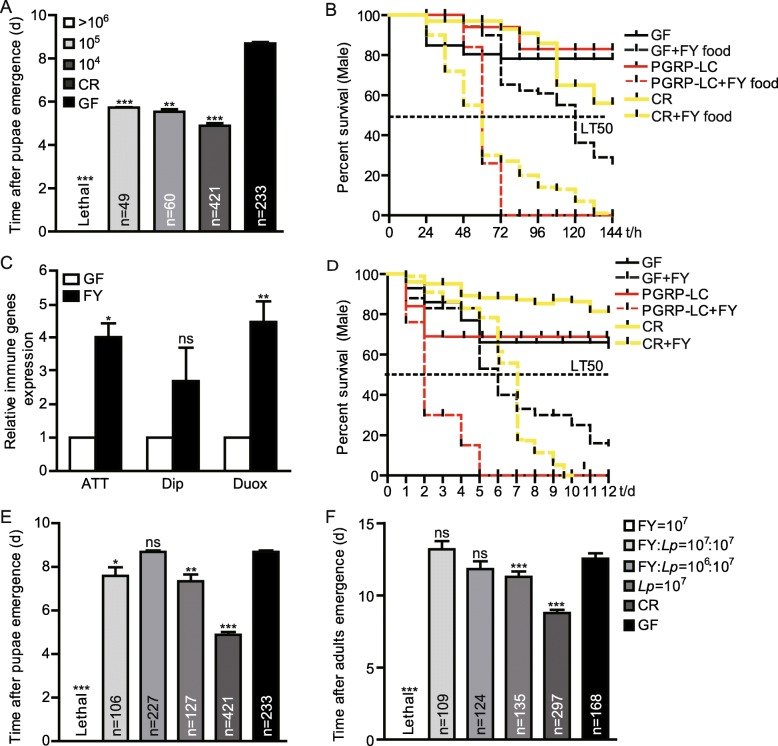Fig. 2.
Commensals alleviate the toxicity of Diaporthe FY to hosts. a The timing of pupa formation of the flies associated with Diaporthe FY. GF larva were inoculated with mixed bacteria, sterile PBS, or Diaporthe FY to generate CR, GF, and Diaporthe FY-associated flies, respectively. Pupae formation was counted daily. b The survival of male adults fed Diaporthe FY molds in food. Fly food was inoculated with 108 Diaporthe FY spores, and incubated at 25 °C for 48 h. Male adults of conventionally reared- and germ-free wild-type and conventionally reared- PGRP-LC mutants were orally infected by feeding with Diaporthe FY, and the number of dead flies was calculated. c Diaporthe FY triggered the innate immune response. RT-qPCR analysis of the gut showed that the relative levels of ATT, Dip, and Duox expression were increased upon Diaporthe FY infection (n = 3). d The survival rate of conventionally reared- and germ-free wild-type and PGRP-LC mutant male adults infected with Diaporthe FY. Male adults were septically infected by punching flies with Diaporthe FY spores, and the number of dead flies was calculated. e and f L. plantarum attenuated the toxicity of Diaporthe FY to flies. The timing of pupa formation and adult eclosion was assessed in the presence of Diaporthe FY, L. plantarum, or the mixture of both, respectively. A one-sample t-test; * P < 0.05; ** P < 0.01

